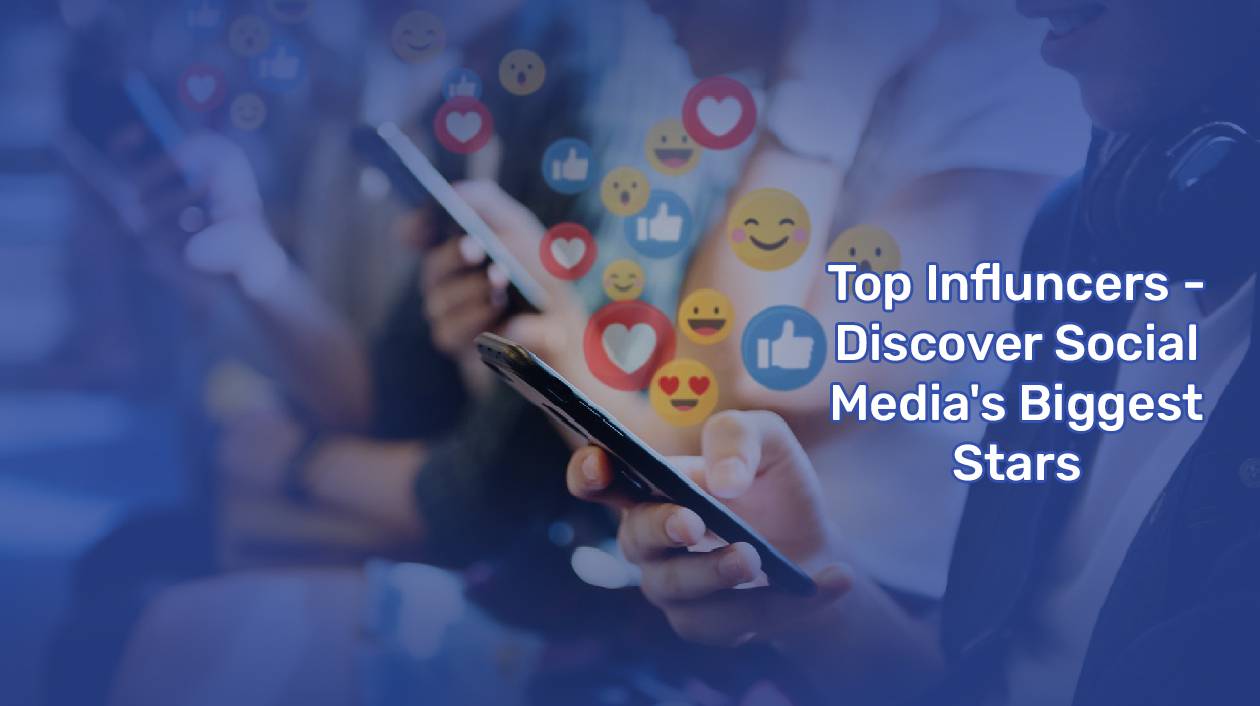Defining the Influencer: The Evolution of Influence in the Digital Age
In today’s digital era, the term “influencer” has evolved from a niche concept into a major force in social media marketing. Initially, influencers were merely individuals with a significant following. However, as social media platforms like Instagram, TikTok, and YouTube have grown, so has the influence these individuals wield. They are now seen as powerful agents of change and trendsetters who can shape opinions, drive engagement, and influence purchasing decisions.

The Spectrum of Social Media Influencers: Categories and Impact
Influencers come in various categories, each with a unique impact on their audience. These categories include:
Mega-Influencers: Individuals with over a million followers. They often have celebrity status and a broad reach, such as Cristiano Ronaldo or Kylie Jenner.
Macro-Influencers: Influencers with 100,000 to a million followers. They tend to be niche experts in their fields, like tech reviewers or fitness coaches.
Micro-Influencers: With 1,000 to 100,000 followers, these influencers have a highly engaged and loyal audience. They are often seen as more relatable and trustworthy.
Nano-Influencers: Influencers with fewer than 1,000 followers. While their reach is smaller, their close-knit community allows for highly targeted and authentic engagement.
Also Read: A Comprehensive Guide to Digital Marketing: 7 Essential Strategies for Success
The Global Stage: Top Social Media Influencers Shaping Trends
Around the globe, several influencers are making waves and setting trends across various industries:
Chiara Ferragni: A fashion blogger and entrepreneur known for her influential role in the fashion industry.
Zach King: Famous for his magic vines on TikTok, Zach King has captured the imagination of millions with his creative content.
PewDiePie: A gaming YouTuber with one of the largest followings, known for his engaging and often humorous content.
These influencers are not only shaping trends but also redefining the way brands interact with their audiences.
Leveraging Influence for Brand Growth: Strategies for Collaboration
Collaborating with influencers can significantly boost your brand’s visibility and credibility. Here are some effective strategies:
Identify the Right Influencers: Ensure their values align with your brand. Look at their engagement rates, content quality, and audience demographics.
Create Authentic Partnerships: Work with influencers who genuinely love your products or services. Authentic endorsements are more persuasive to their followers.
Set Clear Goals and Expectations: Define what you want to achieve with the collaboration, whether it’s increasing brand awareness, driving sales, or building community engagement.
Monitor and Measure Success: Use analytics to track the performance of your influencer campaigns. This will help you understand what works and refine your strategy.
Also Read: Monitoring Prominent AI Stocks and Exploring the Latest Trends in AI
The Business of Influence: Monetization and Ethical Considerations
Monetization is a key aspect of the influencer industry. Influencers can earn through sponsored posts, brand collaborations, affiliate marketing, and product endorsements. However, ethical considerations are crucial. Transparency about sponsored content and maintaining authenticity are essential to uphold trust with their audience.
Behind the Scenes: The Life of an Influencer
Day-to-Day Dynamics of Content Creation and Community Engagement
The life of an influencer involves more than just posting content. It includes planning, creating, and managing posts, engaging with followers, and maintaining a personal brand. Influencers often spend significant time curating content, responding to comments, and analyzing performance metrics. Their role is a blend of creativity, business acumen, and social interaction.
Digital Influence in Action: Case Studies of Successful Campaigns
Several brands have successfully leveraged influencer partnerships to achieve remarkable results. For instance:
Nike and Colin Kaepernick: Nike’s campaign featuring Colin Kaepernick sparked widespread attention and discussion, significantly boosting brand engagement and sales.
Daniel Wellington: This watch brand used a network of influencers to promote its products, leading to substantial growth in brand recognition and revenue.
Future Trends: Predicting the Next Wave of Social Media Influence
As technology and social media continue to evolve, new trends will shape the influencer landscape. Anticipated trends include the rise of virtual influencers, increased use of artificial intelligence in content creation, and a greater emphasis on micro and nano-influencers who offer niche and highly engaged audiences.
Building Your Path as Influencers or Brand Collaborator
Step-by-Step Guide to Growing Your Online Presence Authentically
For aspiring influencers and brands looking to collaborate, authenticity and strategic planning are key. Start by:
Defining Your Niche: Focus on a specific area of interest to attract a targeted audience.
Creating High-Quality Content: Invest in content creation that resonates with your audience.
Engaging with Your Community: Build relationships with your followers through consistent and genuine interactions.
Monitoring Trends and Adapting: Stay updated with industry trends and adjust your strategies accordingly.
Finally,
Influencers have become pivotal figures in the digital age, driving trends and shaping brand perceptions. By understanding the different categories of them, leveraging their impact, and staying informed about future trends, brands and individuals can successfully navigate the world of social media influence. Whether you are an aspiring influencer or a brand seeking to expand your reach, strategic collaboration and authentic engagement are essential for success.
Our platforms:
Facebook – Facebook ME – Instagram – LinkedIn – LinkedIn ME

